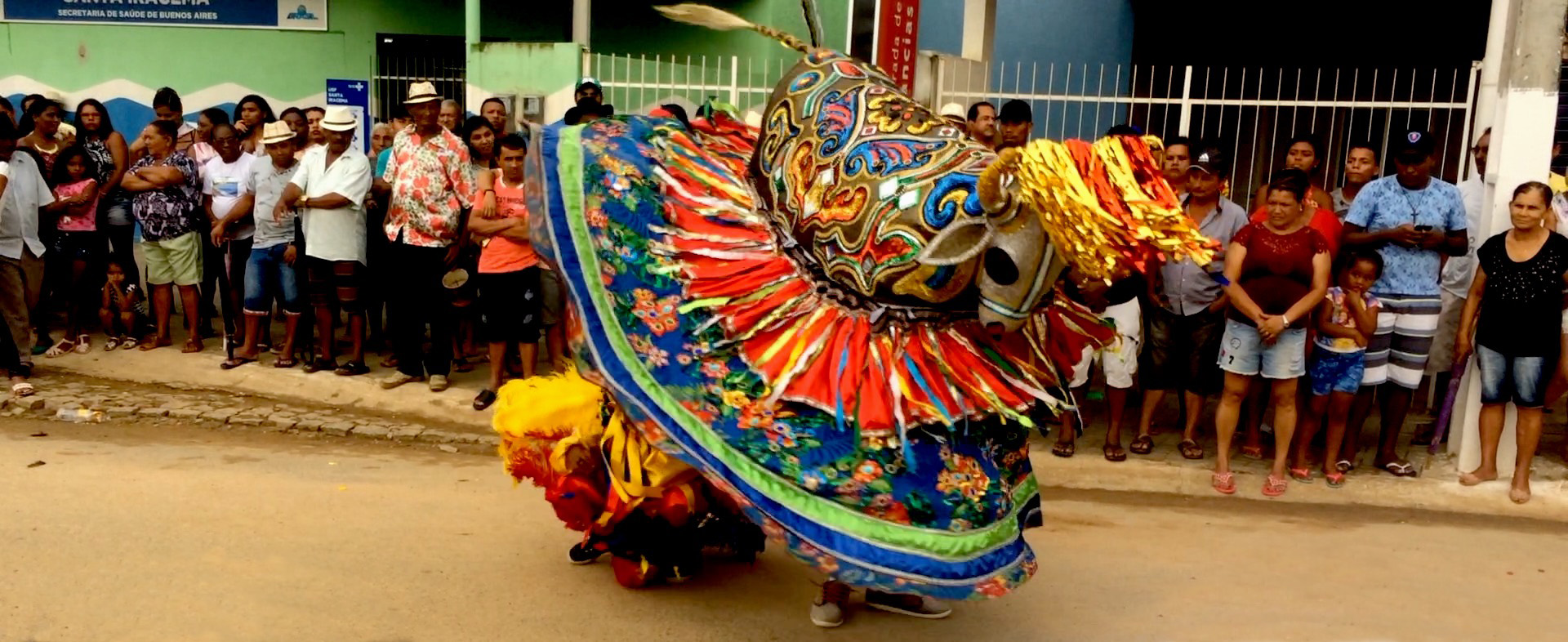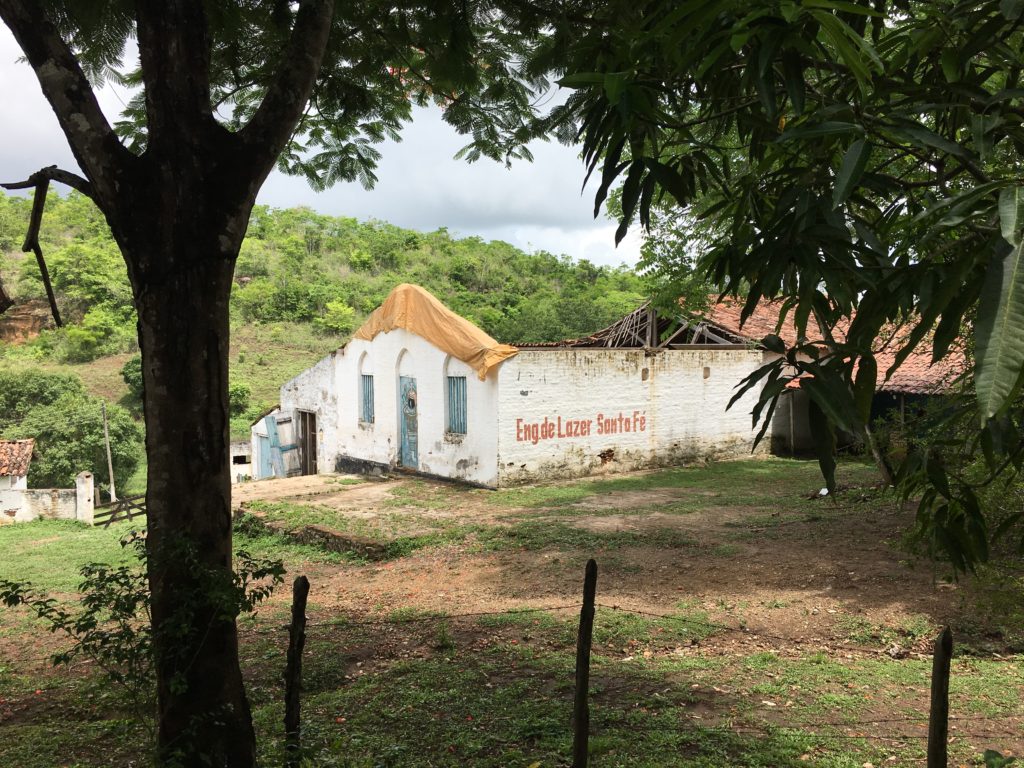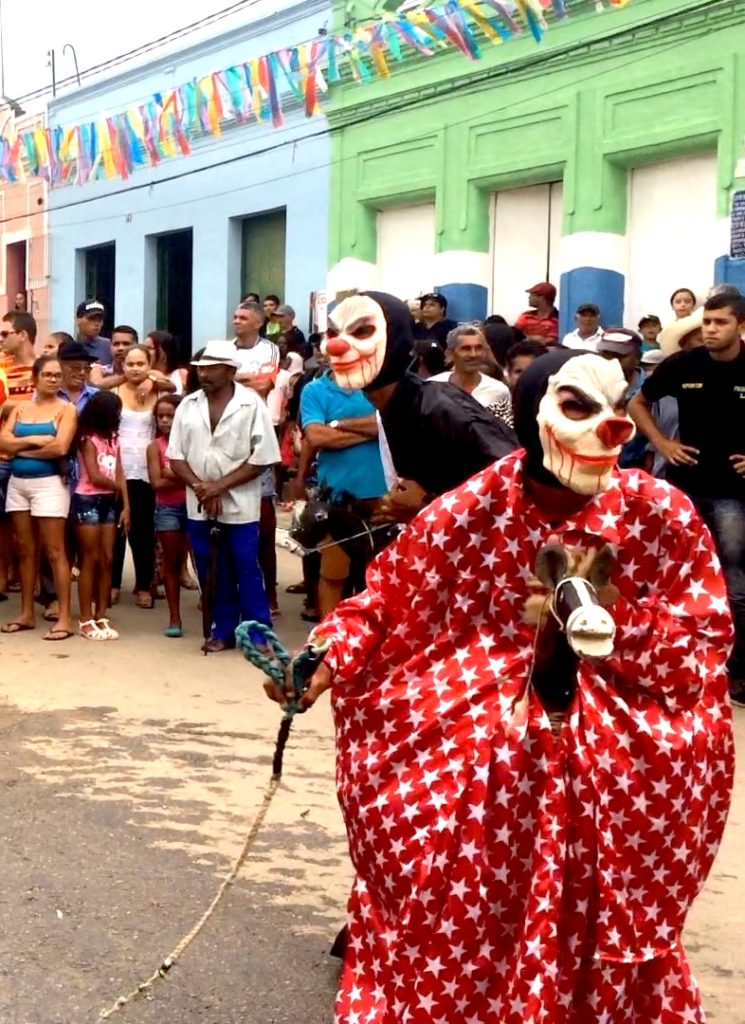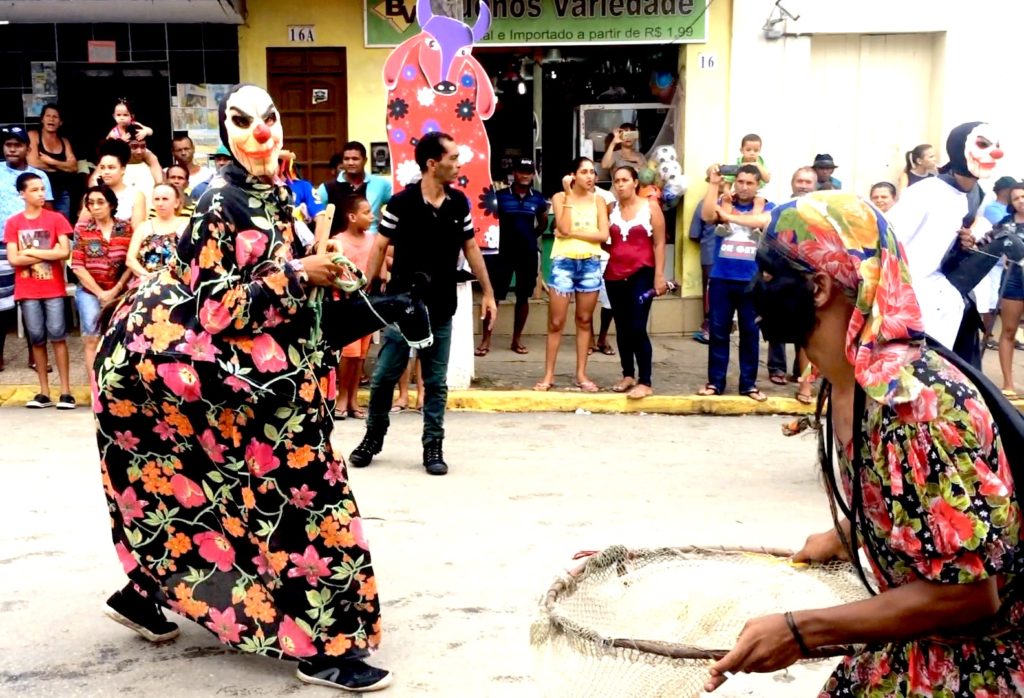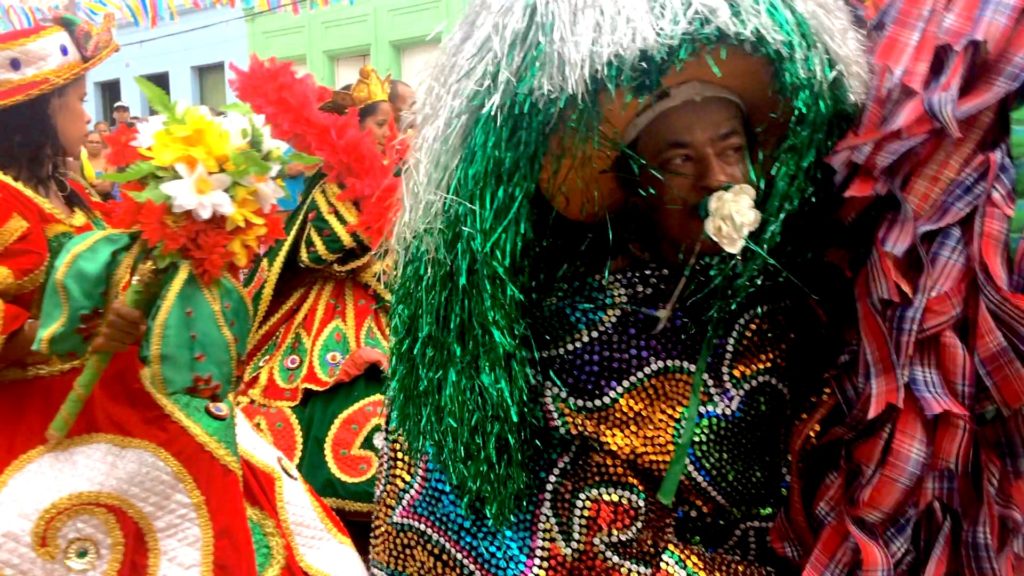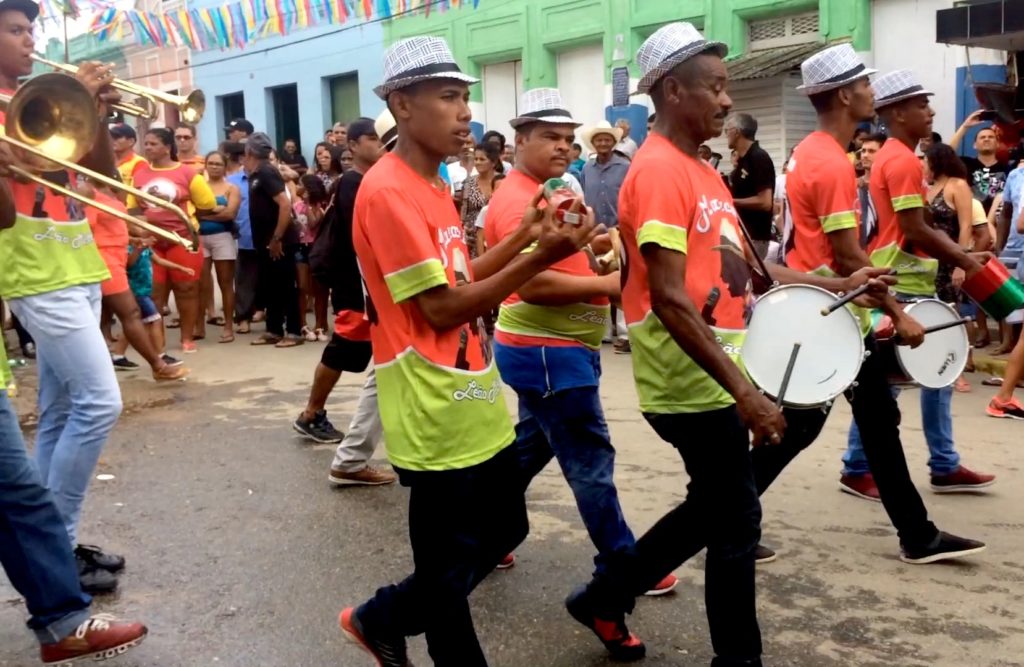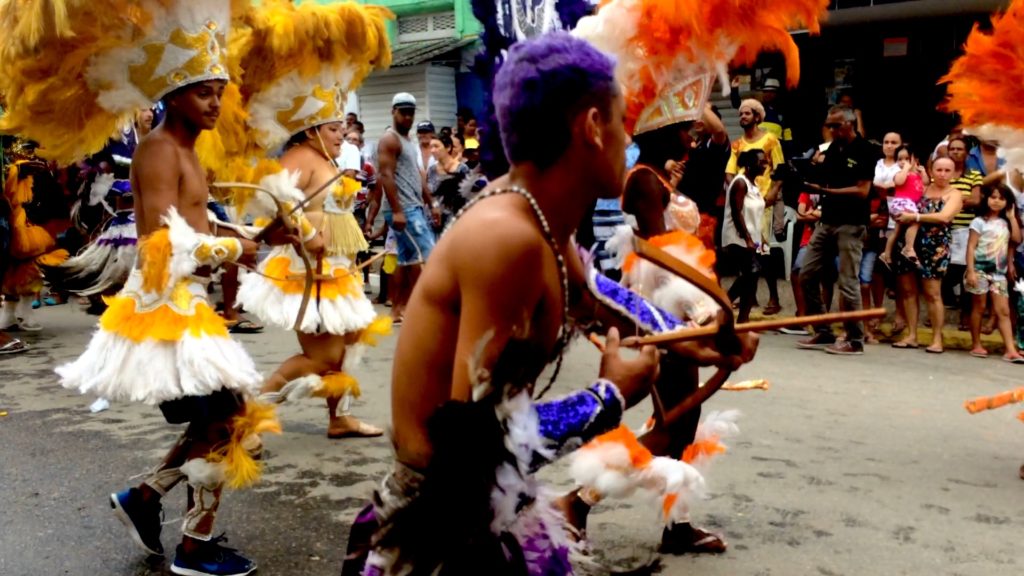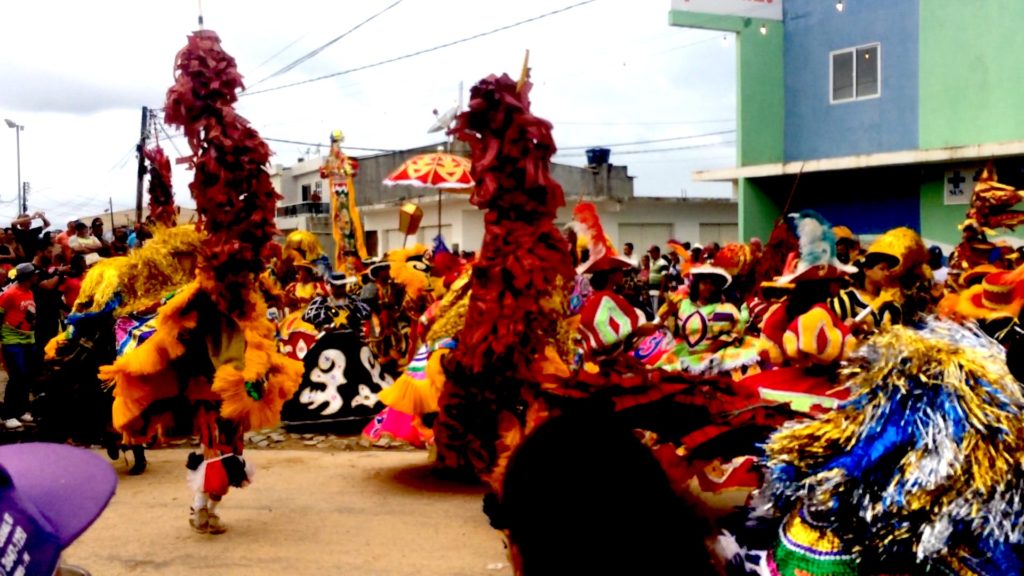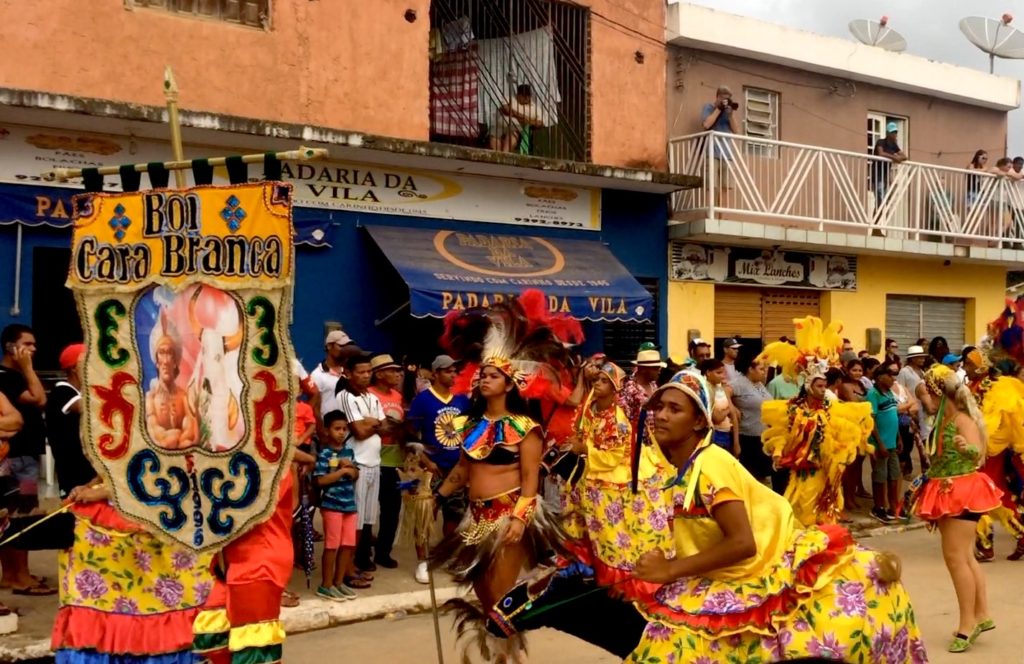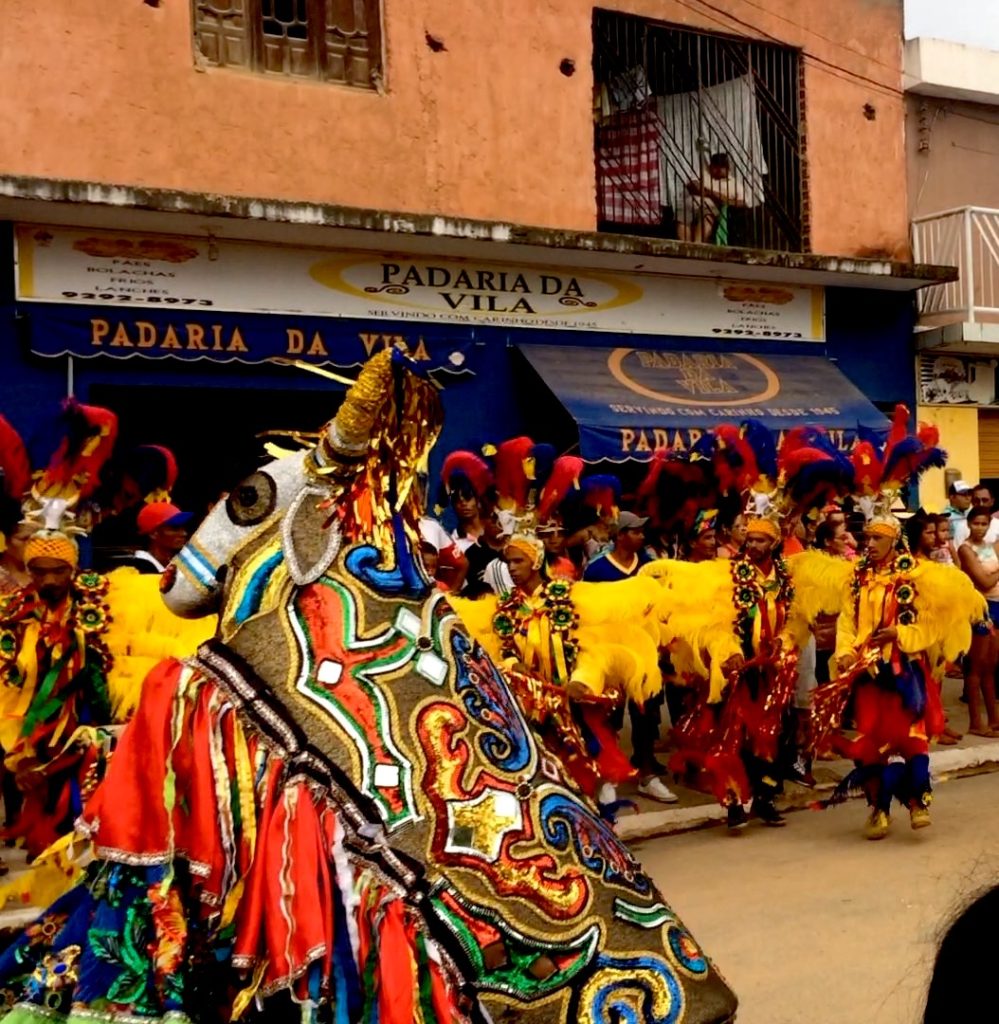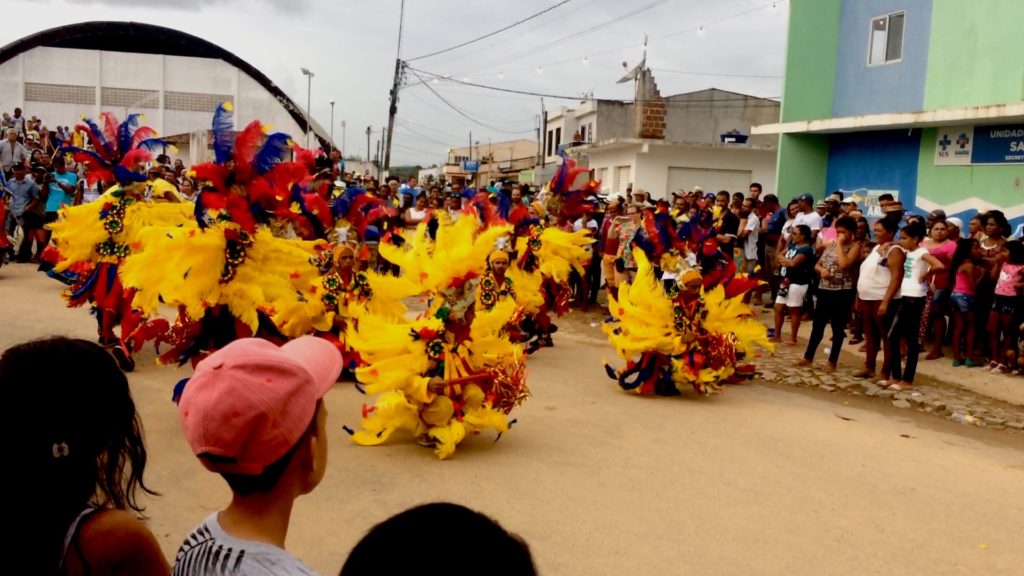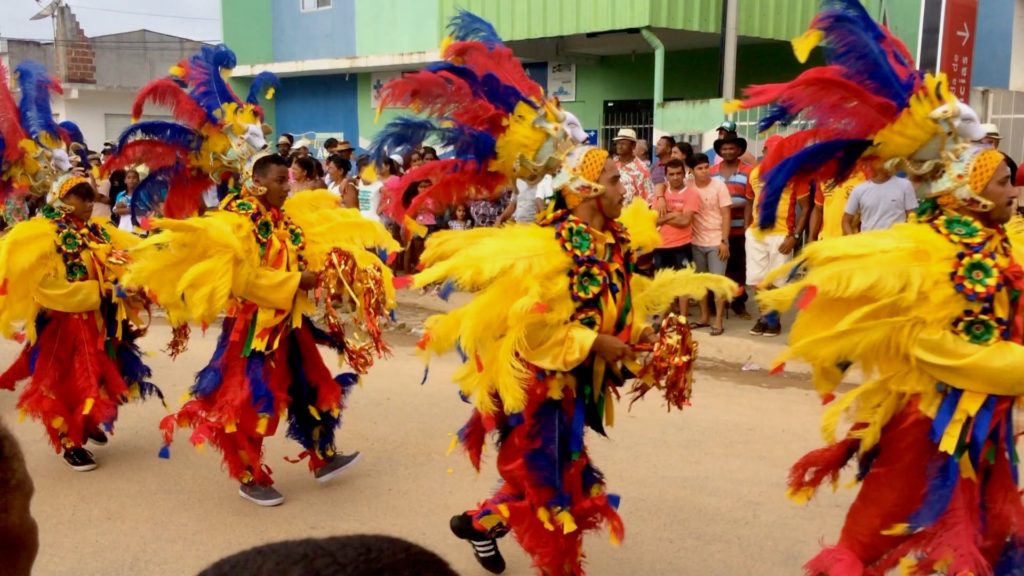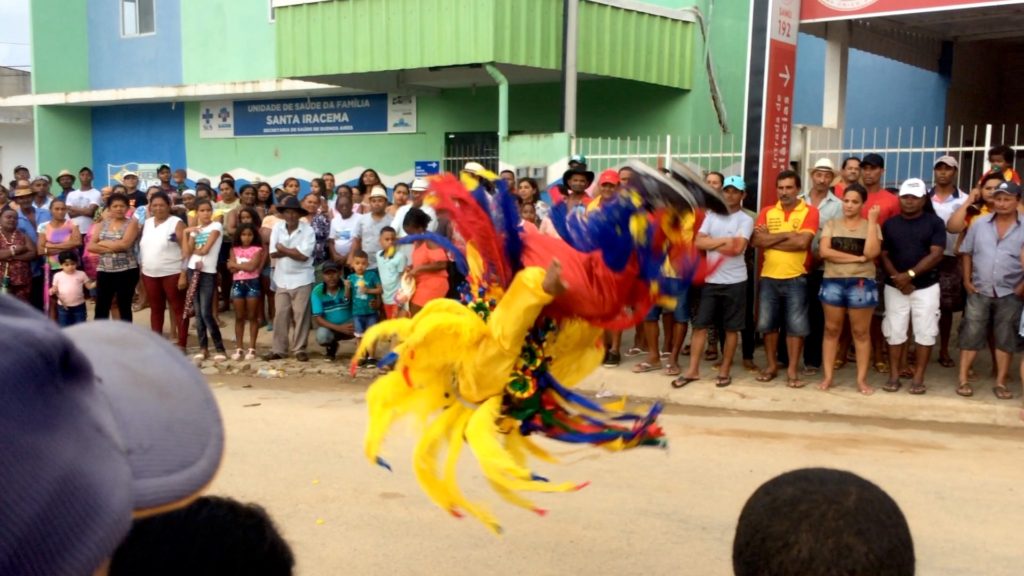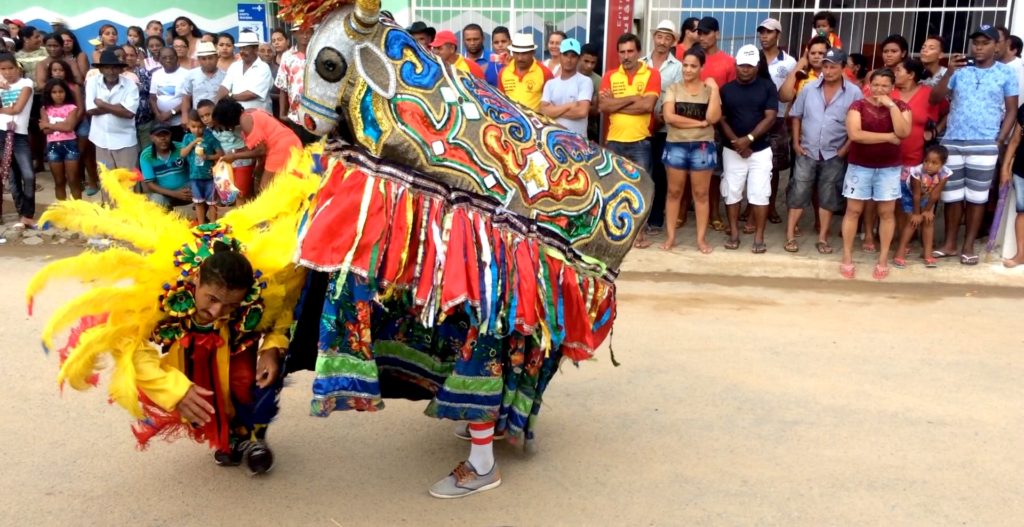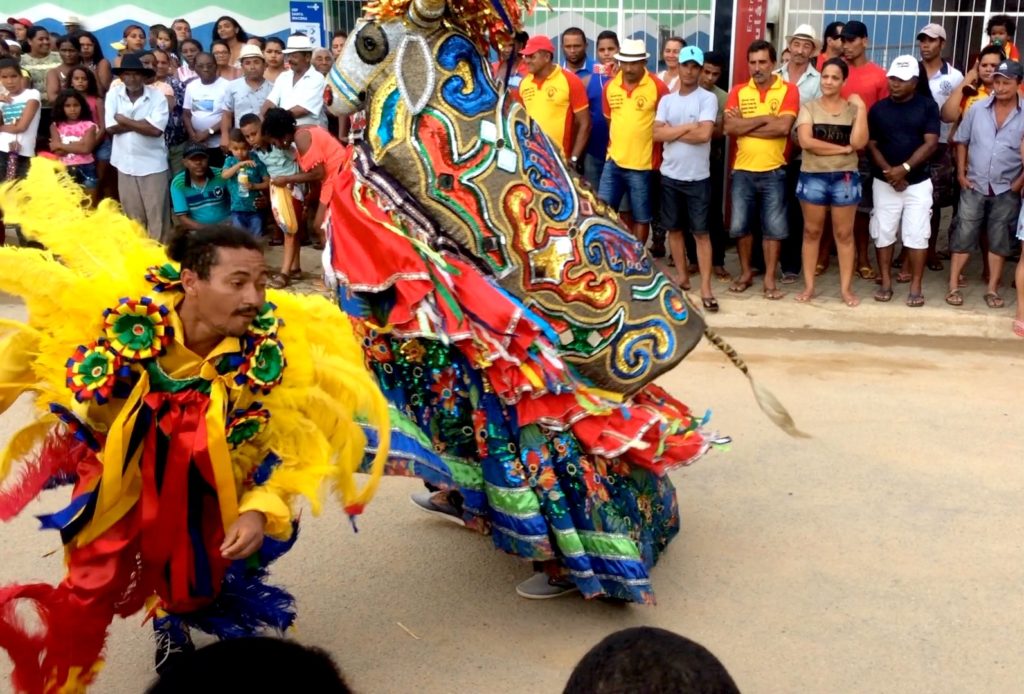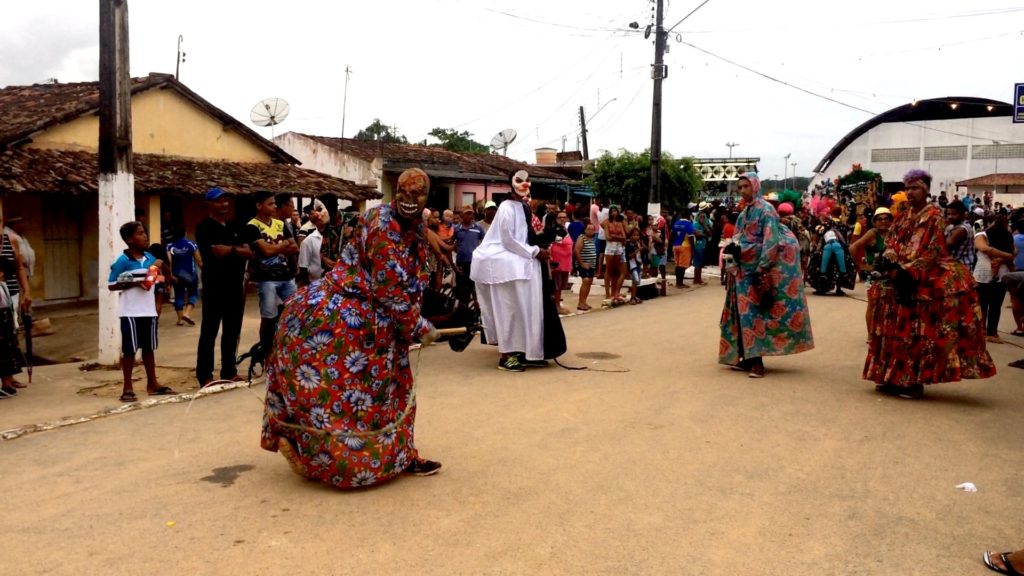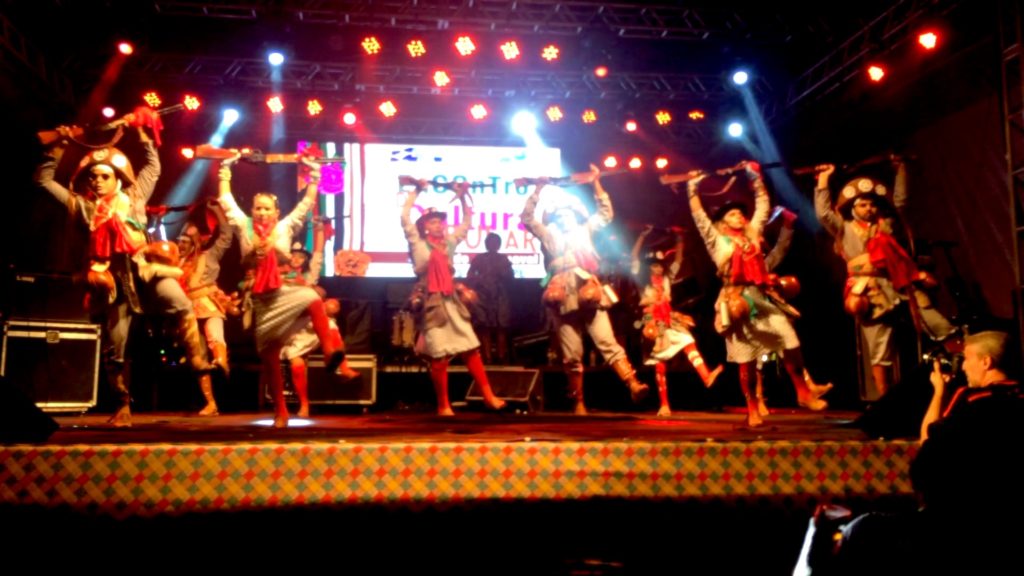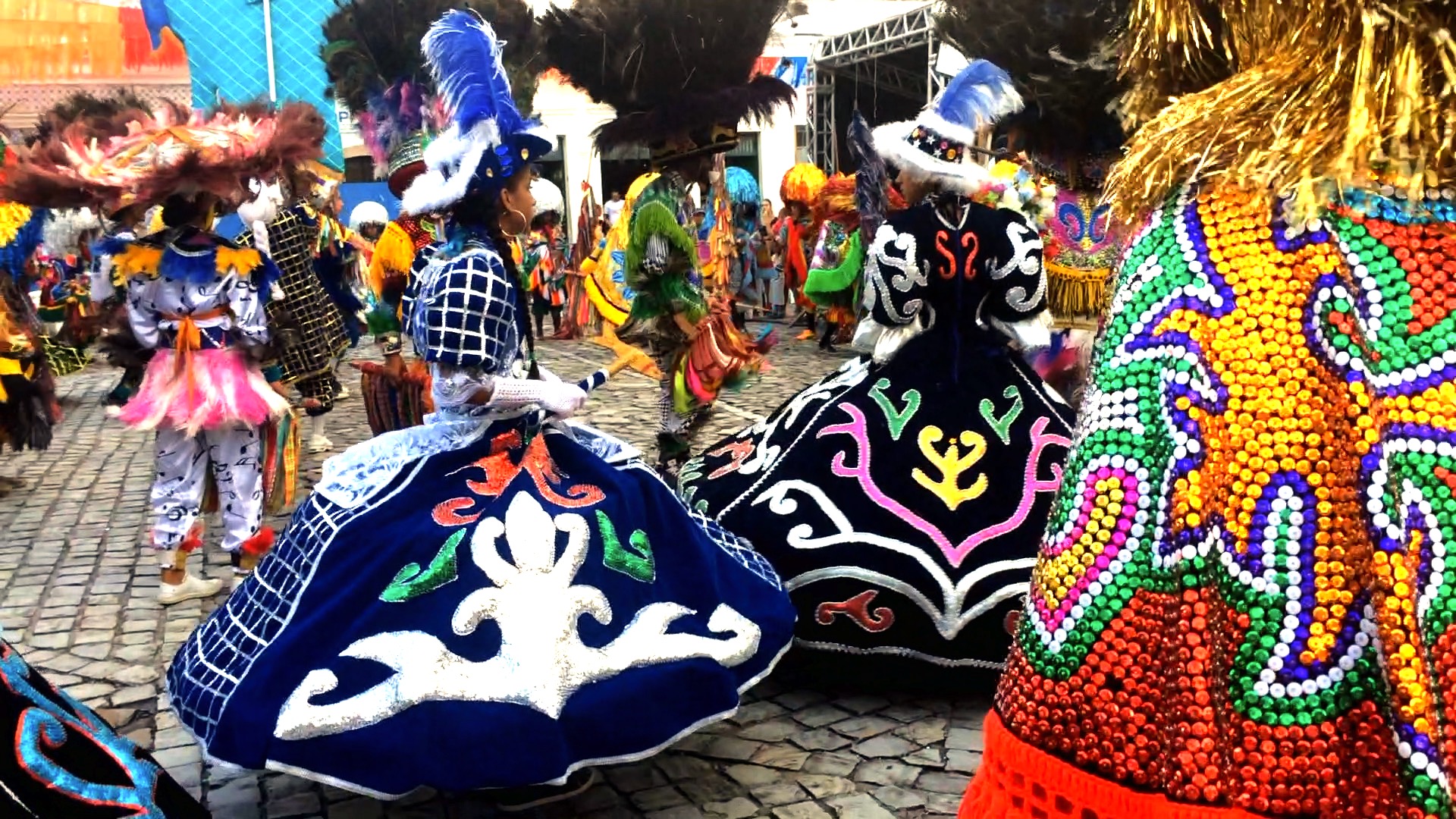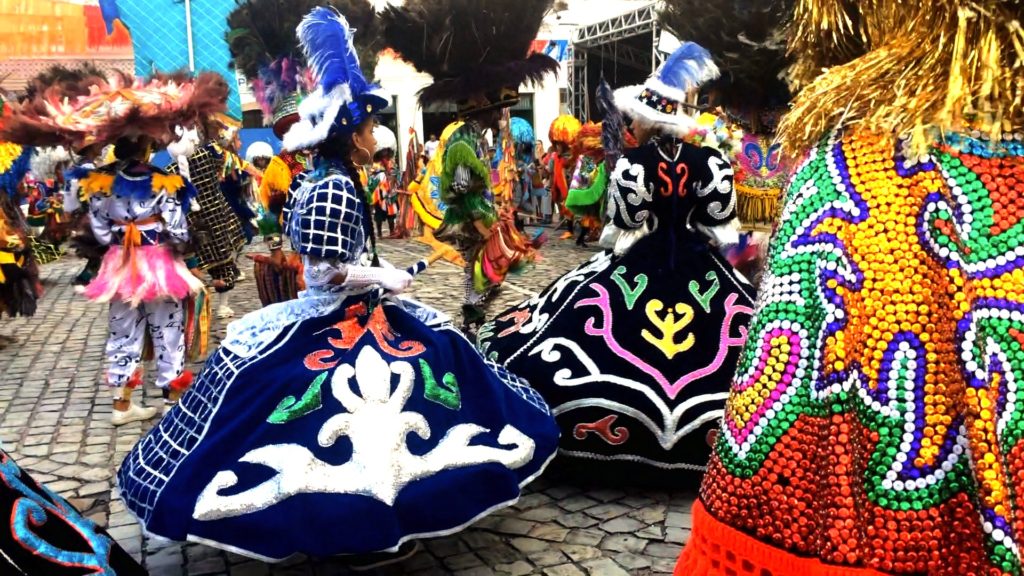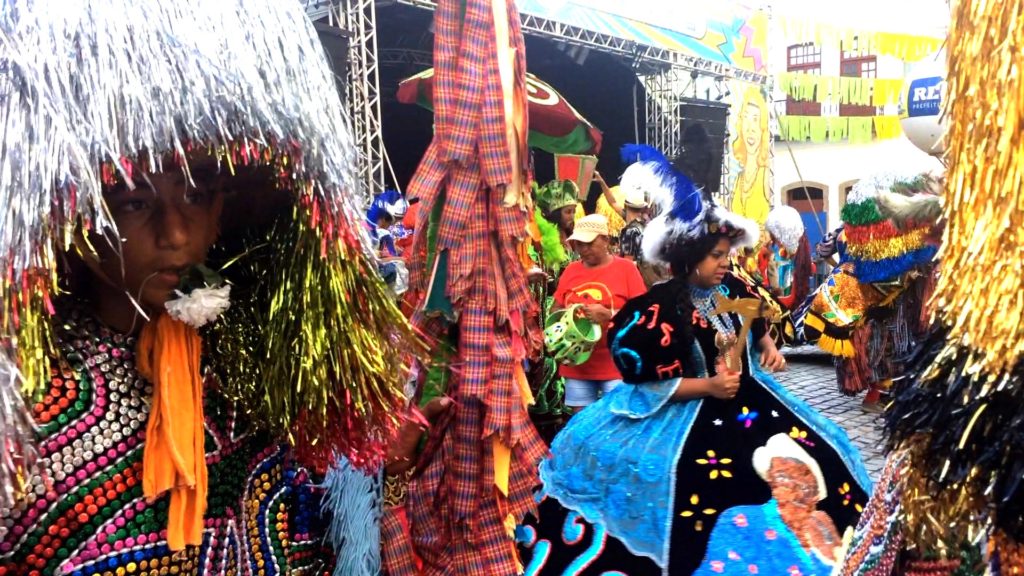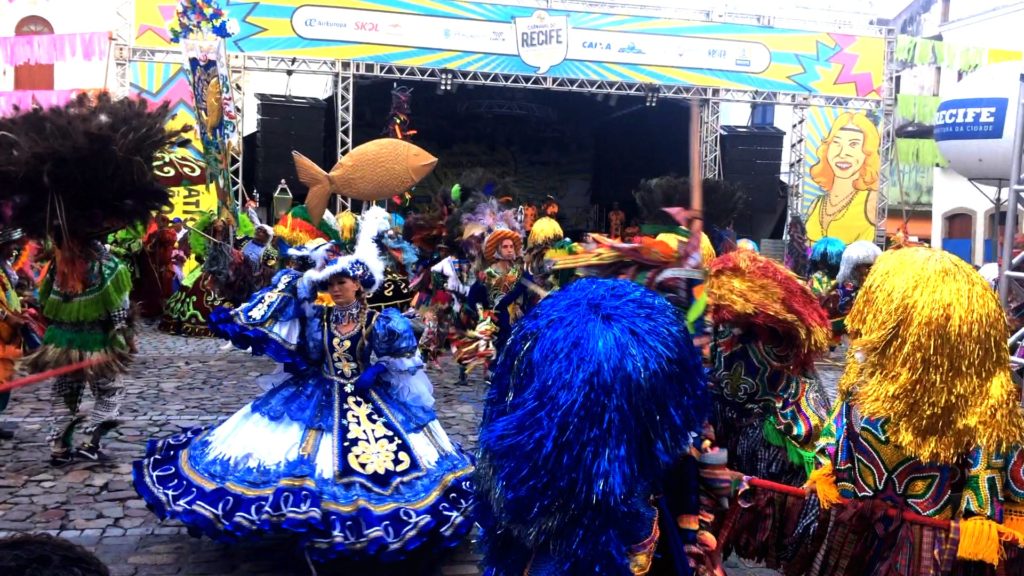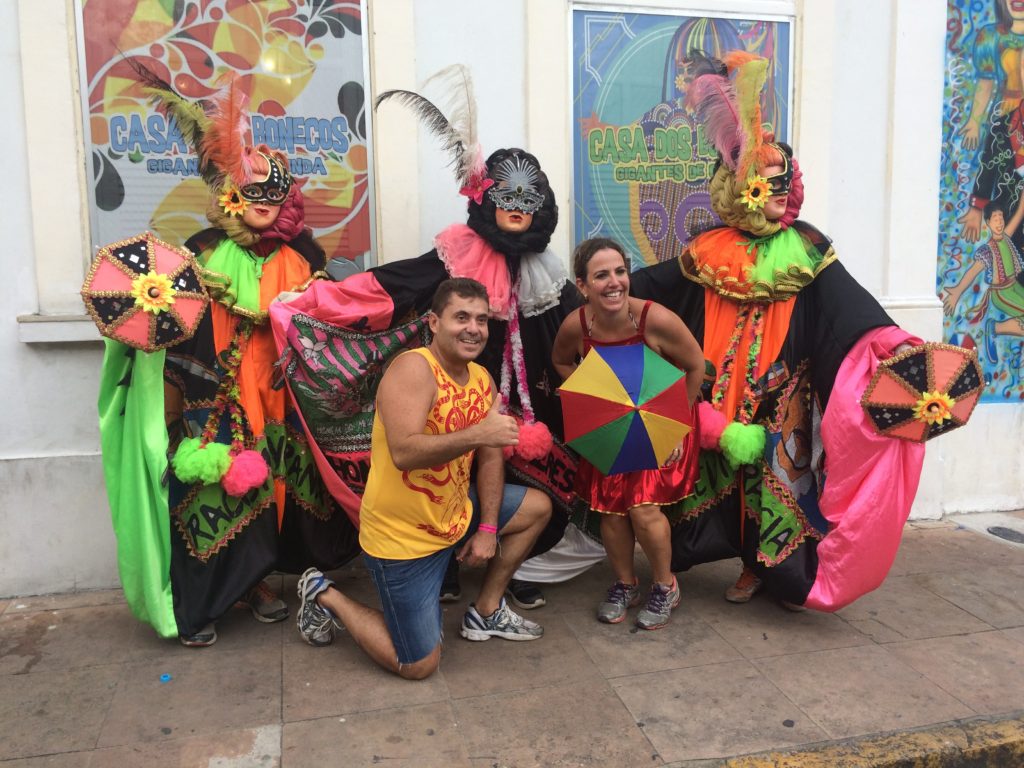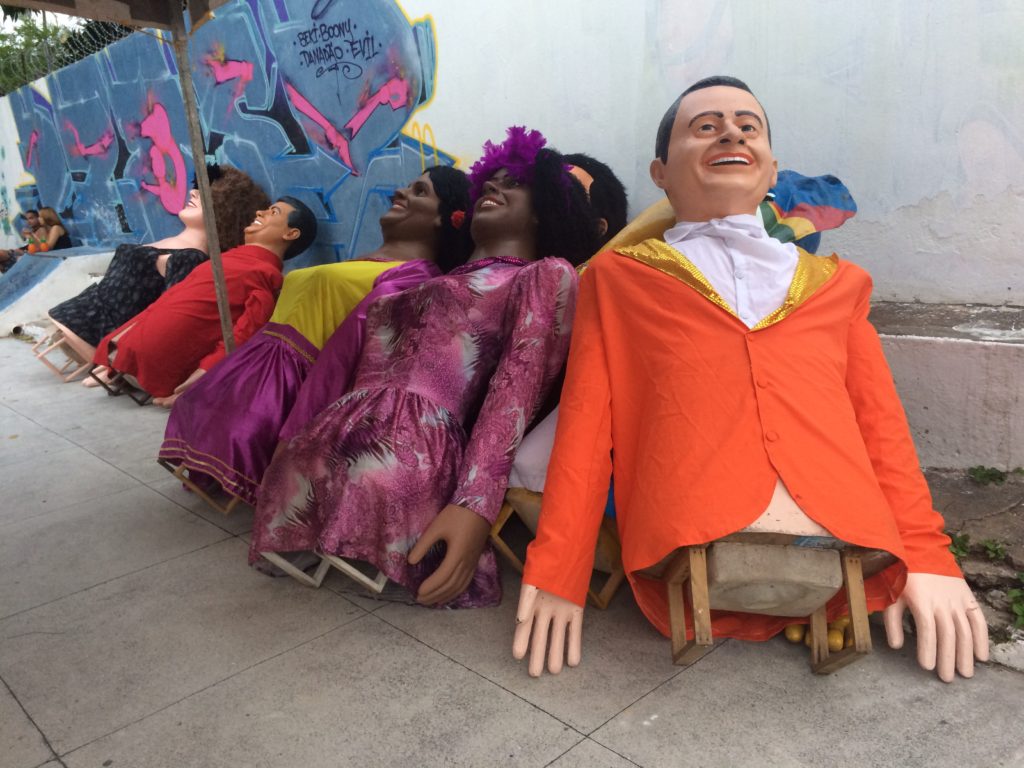This weekend we went to Buenos Aires (in Pernambuco, not Argentina; about 90km from Recife) to check out the Encontro de Cultura Popular. The event was “revivendo o Carnaval [reviving carnival],” as the tagline said. The program promised a taste of many of the popular music and dance traditions of the region (Zona da Mata Norte in Pernambuco), including: maracatu rural / maracatu de baque solto, maracatu nação / maracatu de baque virado, coco de roda, frevo, ciranda, mamulengo, boi, forró, baião, caboclinho, xaxado, afoxé, and fusão.
It was wonderful to get out of the city after a very loud, crowded, and hectic week of carnival. The air was fresh, the landscape was green, there were geese squawking and toads hopping. We stayed at the Engenho Santa Fé, an old sugar cane processing plant with rooms that was rebuilt for guests, with rooms converted from the original horse stables. We had a beautiful view and delicious home-cooked food for every meal. We were welcomed by our new friend Afonso Oliveira, who helped produce and coordinate the event.
Engenho Santa Fé (Nazaré da Mata, Pernambuco)
Buenos Aires, Pernambuco
Saturday, February 17
We arrived on Saturday morning and saw the cortejos (processions) of the various maracatu, boi, and caboclinho groups. The sky was threatening rain, and it did pour down at times, but the show went on. The groups wore their elaborate, bright, and heavy costumes, while crowds gathered to watch them pass. It was quite a spectacle, and I couldn’t get enough of the bright, shiny colors.
My favorite characters were the burrinhos, with their scary plastic masks, patterned dresses with hoop skirts to accentuate the rear and “hobby horse”-like attachments at the front. They carried chicotes, or whips, which reminded me of those in Montserrat’s masquerades—I spent I lot of time in my dissertation work trying to understand and theorize those whips. Here, there were many more whips, many more cracks, and it felt more threatening than in Montserrat, and I wondered if this is how Montserrat’s masquerade troupe rivalries might have played out “before the volcano.” These burrinhos led each group and seemed to clear the path for them, even walking ahead of the warrior-like caboclos de lança with their shiny headwear made of cellophane strips, Ray-Bans, colorful sequined capes, and ribboned lances—clanking down the streets with big cowbells under their clothes.
I also enjoyed the group Boi Cara Branca from Limoeiro, who wore yellow, red, and purple feathered costumes and did back flips, one by one, down the street. After each one did their flips and showed off an impressively long handstand, they would crouch to the ground in a queda de rins position (to use the capoeira term) and the boi (bull) came over, spun over him, nudged him (like a blessing? or not?), and then ran off again. I would love to know more about what is going on here.
In fact, there is much more going on here with all the groups—boi, maracatu rural, and caboclinho—that I am still learning about. There were many more characters and personas and costumes and activities that I haven’t mentioned at all.
In the evening, there were performances on the main stage at Vila São Luiz. We saw a frevo orquestra, Orquestra Curica, from Goiana, which was an ensemble of young musicians, many of them children. I really enjoyed the performance by the group Xaxado Cabras de Lampião, which was a danced performance alluding to the story of the famous cangaçeiro, Lampião. There were eight performers (four men and four women) wearing the recognizable costumes of Lampião and his wife and literal partner-in-crime, Maria Bonita. They carried rifles and did an incredible sapateado (percussive footwork) that reminded me of a cross between Scottish highland dancing (the wide legs and one-arm-on-hip-with-other-arm-above-the-head) and flatfooting (all those chugs!).
Buenos Aires, Pernambuco. 17 de fevereiro de 2018.
Check out a live broadcast on Globo from Saturday’s cortejos: https://globoplay.globo.com/v/6511707/
Sunday, February 18
The next day, we saw many more performances on the main stage at Vila São Luiz. We saw a puppet troupe, Mamulengo Riso da Noite from Buenos Aires, followed by Afoxé Ylê de Egbá from Recife. After that were two amazing coco groups, Coco de Pareia from Goiana and Coco Popular from Aliança. Their styles were notably different, but both got the crowd stomping out the irresistible coco rhythm with their feet.
Buenos Aires, Pernambuco. 18 de fevereiro de 2018.

